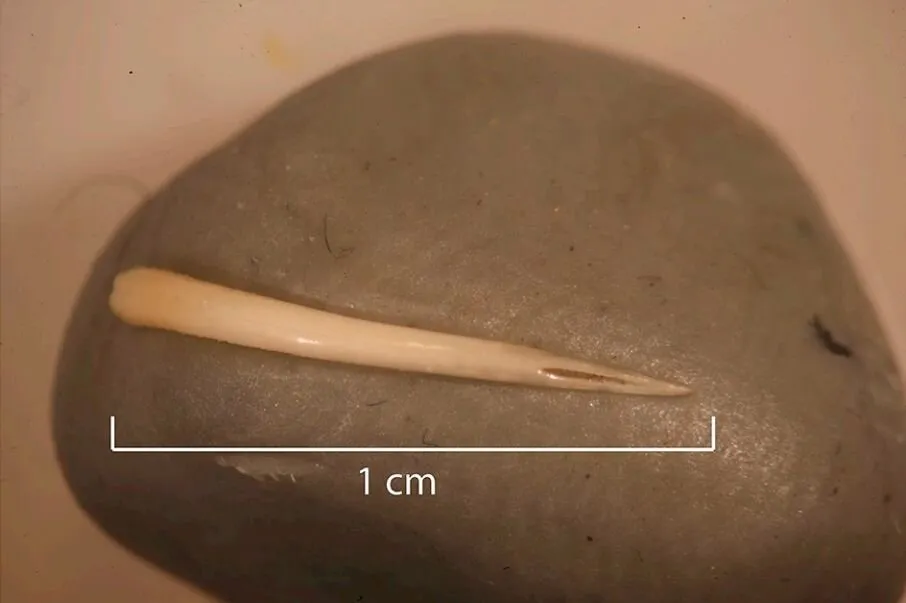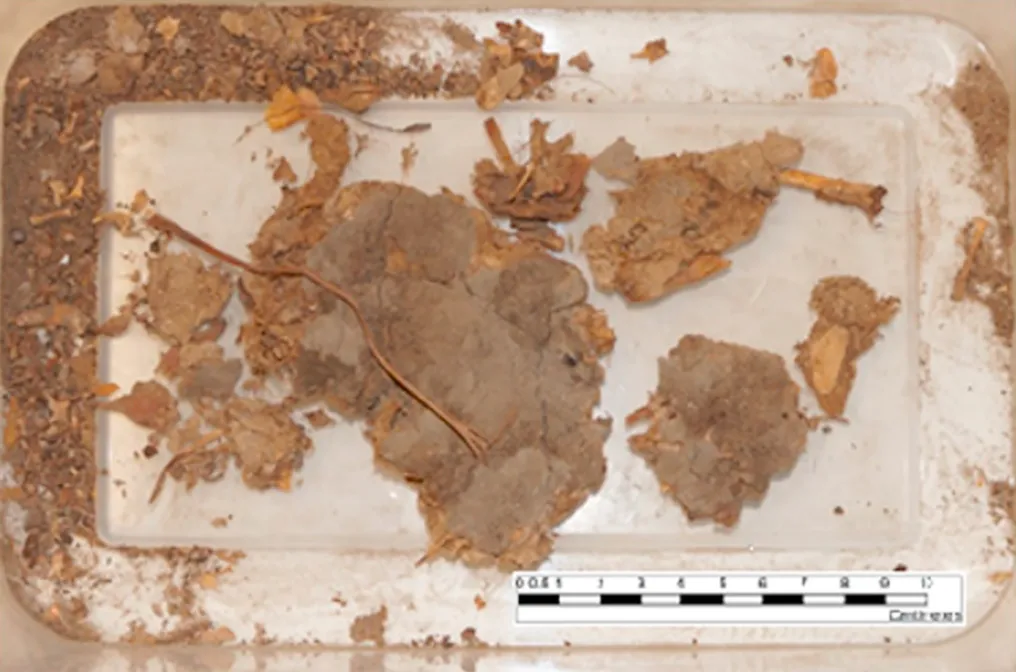This 1,500-Year-Old Chunk of Fossilized Human Poop Contains Remains of a Whole Rattlesnake
Researchers believe an ancient hunter-gatherer consumed the reptile whole as part of a ceremonial or ritualistic event
/https://tf-cmsv2-smithsonianmag-media.s3.amazonaws.com/filer/b5/6c/b56ca46a-65df-4e50-924b-8cb43e0487fe/istock-121911200.jpg)
Some 1,500 years ago, a hunter-gatherer living in the Lower Pecos Canyonlands of southwest Texas feasted on agave, prickly pear cactus, asparagus-like vegetation, a whole raw rodent, and, most surprisingly, an entire rattlesnake complete with bones, scales and a fang. Today, the archaeological legacy of this unusual meal survives in the form of fossilized poop, or coprolite, excavated in the late 1960s but left unstudied until recently.
As a trio of researchers writes in the Journal of Archaeological Science: Reports, the find marks the first evidence of whole-snake consumption ever found in the fossil record. Given the dangers associated with dining on such a poisonous reptile, the team posits that the human who provided the feces specimen wasn’t enjoying a local delicacy, or even acting out of sheer hunger. Instead, it’s more likely the individual ate the snake during a ceremonial or ritualistic event.

According to Gizmodo’s George Dvorsky, the coprolite in question is one of more than 1,000 excavated at the Conejo Shelter site between 1967 and 1968. Carbon dated to around 1,000 years prior to Europeans’ arrival in the so-called “New World,” the fossilized poop was found in a section of the rock shelter probably used as a latrine.
For the most part, the sample is much like other coprolites unearthed at the settlement. Traces of vegetation align with the Lower Pecos community’s plant-heavy diet; as Dvorsky notes, the hunter-gatherers lived under harsh desert conditions and rarely managed to kill animals larger than rodents, fish and reptiles, leaving them heavily reliant on vegetation for both nutrition and medicinal needs. Unlike the rattlesnake, the intact rodent—“evidently eaten whole, with no indication of preparation or cooking,” as the authors write in the study—is also fairly typical of the early human culture, which left behind plenty of coprolites containing chunks of fur and bone.
What differentiates this particular fossilized specimen from others is the presence of a whole snake consumed with seemingly little to no preparation. Although hunter-gatherers from the region were known to eat snakes, Bob Yirka reports for Phys.org, they always removed the reptiles’ heads, rattles and skin first. Dvorsky cites a group based in what is now Utah and Colorado; as he notes, the Ute people skinned their scaly victims before roasting them over coals.

Comparatively, researchers led by Elanor Sonderman of Texas A&M University observe in the study, the snake found in the coprolite boasts intact hair and shows no evidence of heat damage. In total, Sonderman, Crystal Dozier of Wichita State University and Morgan Smith of Texas A&M recorded 11 rib bones, 11 vertebrae, 48 scales and 1 incisor believed to belong to a member of the Viperidae family. Based on the morphology of the scales and size of the fang, the snake was probably a Crotalus atrox, or western diamondback rattlesnake. Interestingly, the team writes, it’s possible that the whole rodent also found in the feces was “consumed by the snake first and ingested by the human … secondarily.”
According to the study, serpents are a recurring motif in Lower Pecos rock art, or painted and carved images found at rock shelters and minor overhangs. It’s possible the people behind these creations, much like the Aztec, Huichol, Yaqui and Hopi of Mesoamerica and southwest American, viewed the snake as a “gateway or barrier between earth and supernatural realms.” Even if this wasn’t the case, the authors explain, “snakes [were] considered to hold power to act upon certain elements of the earth.” The spiritual significance ascribed to such reptiles supports the theory that the early hunter-gatherer ingested the animal for a “distinctly ceremonial or ritualistic purpose.”
As Andrew Masterson muses for Cosmos, the fact that the research relies on a “sample size of one” makes it difficult to determine the exact nature of the unexpected discovery. Further complicating the find are the possibilities that one individual’s feces became intermixed with surrounding material such as fur and bones, or even with other humans’ fecal matter. Still, Sonderman tells Gizmodo’s Dvorsky, the researchers believe they have enough evidence to rule out both of these potential complications.
“There is simply no way of knowing whether the long-distant residents of the Conejo Shelter opted to devour whole, raw venomous snakes, let alone whether they did so for cultural, religious or simply nutritional purposes,” Masterson concludes. “The single piece of ancient faeces may in fact represent nothing more than the after-effects of a lone resident who decided on a whim to see what snake tasted like and then decided never to repeat the experiment again.”
/https://tf-cmsv2-smithsonianmag-media.s3.amazonaws.com/accounts/headshot/mellon.png)
/https://tf-cmsv2-smithsonianmag-media.s3.amazonaws.com/accounts/headshot/mellon.png)